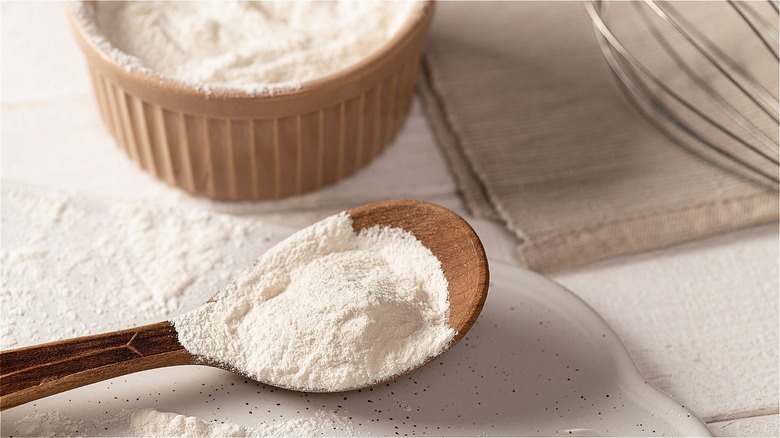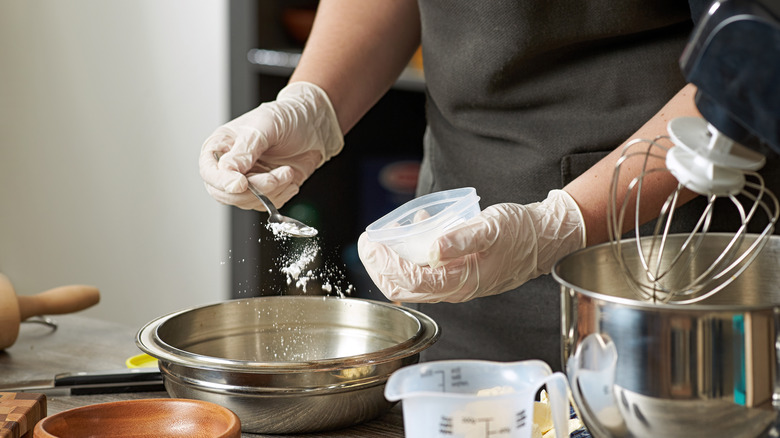You're Probably Taking The Invention Of Baking Powder For Granted
If you're a home cook or a home baker, maybe you've watched too many episodes of "The Great British Baking Show" or Netflix's "Sugar Rush Christmas," and now you want to bake a cake or cookies yourself. After all, it's the festive Christmas season, and who wouldn't want to cheer up their friends and family with an impressive cake or fragrant cookies? And if you're like us, you may not know the difference between baking soda and baking powder. Which one to use? Baking soda and powder help baked goods rise before being placed in the oven.
HealthLine reports that baking soda is actually sodium bicarbonate, which is activated once it's mixed with a liquid and an acid. Baking powder, on the other hand, already contains baking soda in its base, along with an acid, and cornstarch as a filler. So baking powder needs only a liquid, such as water, to get activated.
There are many health benefits to using baking powder. Very Well Fit reports that it's fat and cholesterol-free, a good source of calcium and phosphorous, and it may improve kidney function and activate some anti-inflammatory pathways in the process. With such benefits, you may already be planning to use it more in your own baking.
Baking powder was invented by a Harvard chemist
Baking powder's popularity and health benefits have been appreciated for decades. The now-kitchen staple was invented in the 1850s by Harvard chemist Eben Norton Horsford (per The MIT Press Reader). He began his studies for a replacement for cream of tartar in 1854, as it was expensive to import into America from Europe. In the process, he created baking powder. The discovery was such a monumental invention that the American Chemical Society named it a National Historic Chemical Landmark in 2006. Horsford's baking discoveries also include the creation of condensed milk, first used on Arctic expeditions (via The MIT Press Reader).
The great thing about baking powder is that if you don't have a store-bought option available, you can easily make your own by mixing baking soda, cream of tartar, and cornstarch (per Simple Living Creative Learning) — just remember to use equal parts baking soda and cornstarch. So the next time you're making pancakes, cornbread, or gooey chocolate chip cookies, you can thank the chemical reaction that baking powder creates — and Horsford — for helping your ingredients to rise and become delicious baked goods (via BBC Food).

